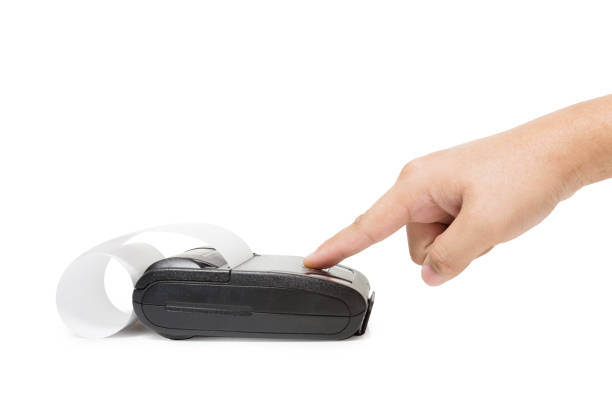


The thermal print head, or TPH, is arguably the most vital component inside any POS Printer.
The thermal print head, or TPH, is arguably the most vital component inside any POS Printer. It is responsible for transferring heat to thermally sensitive paper to create characters, graphics, and barcodes without the need for ink or ribbons. Positioned directly against the paper feed, the TPH plays a continuous role in every receipt, order ticket, or barcode printed. Its efficiency and durability are directly tied to how well the POS Printer functions over time.
Understanding Thermal Print Head Construction
TPHs are typically made of a dense ceramic base layered with a series of tiny resistive heating elements. These microscopic heating dots generate controlled heat patterns as paper passes beneath them. The number and quality of these heating elements influence the resolution and speed of the printed output. Most thermal heads in commercial-grade printers include between 203 to 600 dots per inch (dpi), with higher resolutions offering sharper text and graphics.
Heat Management and Uniformity
Heat control is critical for a thermal head’s lifespan. Overheating specific sections can lead to pixel burnout, where particular dots no longer activate, causing faded or missing areas on printed receipts. TPHs use onboard thermal sensors to monitor and adjust heat delivery. If thermal regulation is poor, this not only shortens the head’s life but also compromises print consistency, which is essential for barcodes and QR codes.
Paper Quality and Coating
The quality of the thermal paper used has a direct impact on TPH longevity. Low-quality papers often carry excess dust or inadequate chemical coatings, which wear down the print head faster through abrasion. High-end thermal papers are smoother, generate less dust, and require lower heat for activation, thereby reducing stress on the head. For businesses using a POS Printer daily, consistently sourcing high-grade paper can extend the TPH’s operational life significantly.
Selecting a POS Printer with a Durable TPH
Evaluating Manufacturer Specifications
When choosing a POS Printer, businesses should consider the rated TPH lifespan, head material, and whether the model supports automatic thermal adjustment. Models with longer warranty periods or specified endurance thresholds often include higher-grade TPH components. Specifications should also detail supported paper types and recommended cleaning routines.
Importance of Compatible Paper Rolls
Some printers require OEM-certified thermal paper for warranty compliance. This ensures the paper meets a specific standard that won’t damage the print head. Businesses trying to cut costs with generic paper may inadvertently shorten the TPH’s life and void service agreements.
Environmental Considerations
Humidity, temperature, and airborne particles all influence TPH wear. Thermal heads operate best in cool, dry environments with minimal dust. Placing printers near kitchen steam, ventilation ducts, or open windows can introduce moisture or contaminants that degrade the TPH. Proper positioning and environment control go a long way in ensuring reliability.
FAQs
What is the average lifespan of a TPH in a POS printer?
A TPH typically lasts between 50 to 150 kilometers of printed paper or 100 million print activations, depending on the quality of the printer and paper.
How do I know if the TPH in my POS printer is wearing out?
Signs include faded text, missing dots, uneven print density, or streaks across the paper.
Can I replace the TPH myself?
Yes, many modern printers have modular TPH units that are user-replaceable with minimal tools.
How often should I clean the thermal print head?
For optimal performance, clean the TPH with alcohol every time you change the paper roll, especially in high-use environments.
Does paper quality really affect TPH lifespan?
Absolutely. Low-grade paper generates more dust and requires more heat, which accelerates wear on the print head.
Conclusion
The thermal print head is the centerpiece of any POS Printer’s functionality and lifespan. Its construction, usage, and care directly influence print clarity, speed, and device durability. From the material composition to firmware-driven control, numerous factors play into how long a TPH will serve effectively. With high-quality paper, smart maintenance practices, and updated technology, businesses can extend their print head’s useful life and reduce long-term costs. As an industry leader, HPRT continues to develop POS printers with enhanced TPH reliability, ensuring businesses stay operational and efficient with fewer service interruptions.
Author Bio:
Written by Adeel Khan, a thermal printing expert who specializes in optimizing point-of-sale systems for retail and service environments. Adeel collaborates with HPRT to help businesses discover smarter, more durable printer solutions. Visit their site to explore the latest innovations in POS printing.
